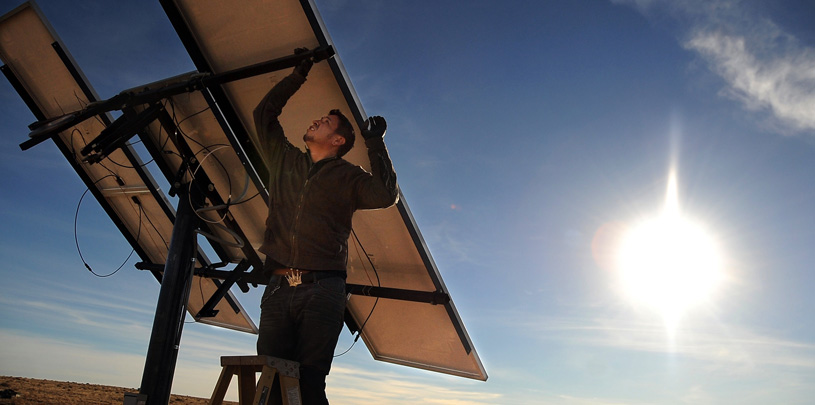
 by Rick Moore, Clean Energy & Efficiency Director
by Rick Moore, Clean Energy & Efficiency Director
Earlier this year, more than 450,000 Arizona residents signed petitions to place Proposition 127 on the ballot this fall. If it passes, Proposition 127 will reduce harmful pollution, including greenhouse gases, create thousands of clean energy jobs, stimulate clean energy projects on tribal lands, and save Arizonans money on utility bills.
Proposition 127 amends the Arizona constitution to require that at least 50 percent of the electricity sold in 2030 by utilities regulated by the Arizona Corporation Commission come from renewable energy sources like solar and wind. Arizona Public Service (APS) and Tucson Electric Power (TEP) are the two largest utilities in the state regulated by the commission.
While amending the Arizona constitution may sound draconian, the Arizona Corporation Commission gets its authority to regulate utilities from the constitution and is not subject to statutes passed by the legislature. Consequently, the only way to require that the Arizona Corporation Commission take a particular action is through the constitution.
In a word: Yes. In the fall of 2017, APS submitted a 15-year power plan to the commission that included only 0.03 percent of electricity generated from renewable sources — just 16 megawatts of utility-scale solar versus 5,500 megawatts to be generated by new gas power plants. The commission was so dismayed that for the first time in its history it refused to accept a plan submitted by a utility it regulates. In addition, the commission enacted a 9-month moratorium prohibiting APS from building gas-fired power plants larger than 150 megawatts.
Proposition 127 is clearly needed as a response to the refusal by APS to begin to significantly reduce its greenhouse gas emissions and our reliance on fossil fuels despite the fact that Arizona has some of the highest potential for solar power in the United States. And unlike volatile natural gas prices, the fuel for solar power — sunlight — is free.
But instead of working to harness the power of Arizona’s free fuel sources, APS has spent more than $11 million fighting Proposition 127, claiming it will increase utility bills, cost jobs, and cause the Palo Verde nuclear power plant to close. Those APS claims have been refuted by studies done at the request of the Natural Resources Defense Council by the nationally known energy consulting firm ICF using publically available projections from the Energy Information Administration and the National Renewable Energy Laboratory.

Interestingly, in nearby Colorado, Xcel Energy recently secured the approval of the Colorado Public Utilities Commission for its Colorado Energy Plan, which includes investing $2.5 billion in 1,100 megawatts of wind, 700 megawatts of solar, 275 megawatts of battery storage, and 380 megawatts of existing gas generation. Xcel projects that its plan will save customers $213 million dollars and result in 55 percent of its electricity coming from renewable energy sources by 2026.
The contrast between what APS proposed to the Arizona Corporation Commission and what Xcel is going to do in Colorado could not be more stark. And not only that, the Xcel plan will bring more renewable electricity on line and do it more quickly than what is required by Proposition 127.
Both the environmental and the economic gains of Proposition 127 steer Arizona in the right direction, toward a cleaner energy future. The Grand Canyon Trust is proud to support Proposition 127.
A rally in Salt Lake City followed by a spiritual walk in White Mesa demonstrate the Ute community's determination to see uranium mill close.
Read MoreArizona Governor Katie Hobbs is the latest elected official to call for an environmental review of Pinyon Plain uranium mine.
Read MoreHow does Colorado River water get divvied out to Colorado, Utah, Arizona, New Mexico, Nevada, California, Wyoming, Native American tribes, and Mexico?
Read More